
Digital Marketing Blogs
"Let's Learn, Explore, and Connect to the World"
Facebook Analytics & Conversion Tracking: Attributing Sales and Leads Back to your Facebook Efforts
- Jenelie Hijosa
- Digital Marketing (Digital Business)

Introduction
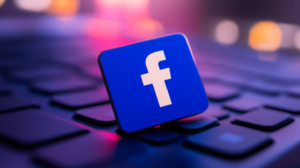
In the competitive realm of digital marketing, tracking and measuring campaign performance is crucial for marketers to understand the impact of their strategies. With Facebook’s massive user base and sophisticated advertising tools, it’s one of the most valuable platforms available today. However, the true power lies in leveraging Facebook Analytics and conversion tracking to directly attribute sales and leads to your marketing efforts.
Facebook Analytics offers an array of insights into customer behavior, engagement, and interactions. By understanding the journey your customers take across different devices and channels, you can tailor your strategies to meet their specific needs and improve conversion rates. Conversion tracking further refines this process by allowing marketers to measure key actions, such as purchases or form submissions, tied to specific ads.
Facebook’s advanced attribution models and tracking features empower marketers to dig deeper into campaign performance. For instance, you can determine whether a campaign effectively targets the right audience or whether a particular creative resonates more with users. Additionally, understanding the attribution models used helps ensure an accurate representation of your ROI.
This comprehensive guide will explore the tools, strategies, and best practices required to accurately measure the ROI of your Facebook campaigns. From understanding the nuances of attribution models to setting up conversion tracking and analyzing campaign data, this guide will provide you with the knowledge to attribute success directly to your Facebook efforts. By gaining mastery over these tools, you’ll be equipped to optimize campaigns, refine your marketing strategy, and drive meaningful business results.
Understanding Facebook Analytics and Insights
Overview of Facebook Analytics

Facebook Analytics provides an in-depth examination of user behavior across multiple devices and channels, offering marketers a wealth of insights to fuel their strategy. By understanding how users interact with your business’s digital properties, you can identify patterns, optimize funnels, and improve overall marketing performance. Let’s break down some key features that make Facebook Analytics a valuable tool for marketers:
Funnel Analysis:
This feature helps you visualize the customer journey from initial awareness to conversion. By identifying stages where users drop off, you can detect bottlenecks and opportunities for improvement; this will help you improve your approach and get more people to take the desired action.
Segmentation:
Analyze data by dividing it into specific segments based on behavior, demographics, or interests. This segmentation enables more granular analysis, helping tailor marketing strategies to different groups and improving engagement.
Customer Lifetime Value (CLV):
Gauging the long-term value of your customers helps you allocate resources more effectively. With CLV insights, you can identify high-value segments and develop targeted campaigns to maximize lifetime revenue.
Navigating Facebook Insights
Apart from Facebook Analytics, Facebook also offers an Insights platform that breaks down performance metrics in an accessible way:
1. Page Insights:
- Page Views: See the number of people who have viewed your Facebook page.
- Reach: The total number of unique users who have seen your posts.
- Engagement: Metrics like likes, comments, shares, and clicks provide an indication of content performance.
2. Ad Insights:
- Click-Through Rate (CTR): also called CTR, click-through rate is a data that tells you the percentage of people who see your ad actually click on it.
- Cost Per Click (CPC): Measures the cost-effectiveness of your campaign based on the amount spent for each click.
- Return on Ad Spend (ROAS): Understand the revenue generated for every dollar spent on advertising.
These insights provide a comprehensive view of organic and paid performance, helping marketers refine content strategy and optimize ad spend.
Setting Up Analytics
To make the most of these tools, it’s crucial to set up Facebook Analytics correctly:
Facebook Pixel Installation:
Ensure the Facebook pixel is properly installed on your website. This small code snippet enables tracking of user actions such as page views, purchases, and form submissions, linking them back to Facebook ads.
Custom Audiences:
- Set up custom audiences to target specific groups of users who have interacted with your business. This targeting allows more effective retargeting and engagement campaigns.
- Lookalike Audiences can help reach new potential customers who share characteristics with your existing high-value customers.
Event Tracking:
Define key events, such as completing a purchase or subscribing to a newsletter. Tracking these events allows you to measure and optimize important conversions.
By understanding Facebook Analytics and Insights, marketers can identify what drives their audience to take desired actions. By using data to guide your marketing, you can develop campaigns that reach exactly the right people, better ad spend optimization, and ultimately helps attribute sales and leads directly to your Facebook marketing efforts.
The Importance of Conversion Tracking
What Is Conversion Tracking?
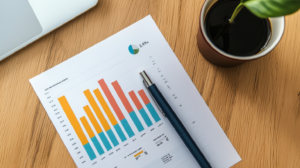
Conversion tracking is a method that allows marketers to keep track and analyze the actions users take after engaging with your Facebook ads. Whether it’s completing a purchase, subscribing to a newsletter, or responding to a contact form, tracking these actions provides a deeper understanding of your ads’ effectiveness in achieving your business goals.
Benefits

Optimize Campaigns:
By identifying which ads drive conversions most effectively, marketers can refine targeting parameters, adjust ad messaging, and experiment with different placements to improve campaign performance.
Better Budget Allocation:
With clear conversion data, marketers can prepare more of their advertising budget to the ads that deliver the highest return on investment (ROI). This approach ensures that marketing spend focuses on strategies that generate meaningful business results.
Measure Multi-Channel Efforts:
Facebook conversion tracking complements other marketing methods, providing a holistic view of your customer’s journey. This enables marketers to understand how Facebook ads interact with email campaigns, SEO, and other efforts, leading to better multi-channel optimization.
Setting Up Conversion Tracking
Facebook Pixel:
When we say Facebook pixel, it is a small piece of code placed on your website that tracks user activity. It monitors actions like page views, purchases, and form submissions, linking them back to your Facebook ads. This data provides valuable insights into how users move through your website after engaging with your campaigns.
Custom Conversions:
To gain more specific insights, you can define unique conversion events that align with your business goals. Whether it’s signing up for a webinar or downloading a whitepaper, custom conversions allow you to measure the specific actions that matter most.
Aggregated Event Measurement:
Aggregated Event Measurement helps marketers track user actions across different devices while respecting user privacy. This feature supports businesses in measuring critical conversion events, even under new data privacy restrictions.
 In summary, conversion tracking is essential for understanding the impact of your Facebook advertising efforts. By properly configuring the Facebook pixel, defining custom conversions, and leveraging Aggregated Event Measurement, marketers can gain a clearer view of user actions and align their strategies to maximize campaign performance and business impact.
In summary, conversion tracking is essential for understanding the impact of your Facebook advertising efforts. By properly configuring the Facebook pixel, defining custom conversions, and leveraging Aggregated Event Measurement, marketers can gain a clearer view of user actions and align their strategies to maximize campaign performance and business impact.
Attribution Models: Assigning Value to Your Facebook Campaigns
Understanding Attribution

Attribution tracks how various interactions influence customers and ultimately lead them to convert. It answers critical questions about which channels and interactions influence a customer’s decision to convert, helping marketers better understand how each engagement with their brand contributes to the final conversion. By leveraging the right attribution model, you can uncover insights that help you allocate your advertising budget more effectively and refine your overall marketing strategy.
Types of Attribution Models
Last Click:
This model attributes all credit to the final touchpoint that directly precedes the conversion event. It’s ideal for tracking immediate actions but doesn’t capture the broader influence of previous interactions.
First Click:
In contrast, the First Click model assigns credit to the initial touchpoint that introduced the user to your brand. It’s useful for understanding which channels are effective in generating initial interest.
Linear:
The Linear model evenly distributes credit across all touchpoints leading up to the conversion. It recognizes the cumulative impact of multiple engagements on conversion behavior.
Time Decay:
Time Decay models prioritize touchpoints that are closer to the conversion event, providing them with higher weight while giving less credit to earlier interactions. This model is suitable for campaigns with long consideration periods.
Position-Based:
Position-based models assign most credit to the first and last touchpoints, while the remaining interactions receive a smaller, evenly distributed share of credit. This approach recognizes the importance of both the initial introduction and the final push towards conversion.
Choosing the Right Model
Consider Your Sales Cycle:
- If your business has a short sales cycle, the Last Click model may be advantageous as it quickly identifies the final touchpoint that closes the sale.
- For longer sales cycles, Time Decay or Position-Based models may be more suitable since they can better account for the cumulative influence of multiple touchpoints.
Understand Customer Behavior:
- Tracking user engagement and interaction patterns will reveal key touchpoints that significantly influence conversions. This data is invaluable for deciding which attribution model to use.
Experiment and Optimize:
- No single attribution model fits all businesses. Test different models to see which one provides the clearest insights into your marketing efforts. Analyze data over time and adjust accordingly to reflect shifts in customer behavior or business goals.
By understanding attribution models and selecting the one that aligns best with your customer journey, you’ll gain a clearer view of which Facebook campaigns are driving in conversions and how each touchpoint contributes to your marketing goals. By understanding how customers interact with your brand, you can make smarter choices about where to spend your money, refine your messaging, and develop a winning marketing strategy.
Leveraging Facebook's Built-In Attribution Tools
Facebook Attribution Tool
The Facebook Attribution tool is a powerful resource that allows marketers to compare various attribution models and understand how each one impacts campaign performance. By doing so, it offers deeper insights into how users respond to your ads in multiple channels and devices, enabling you to make data-driven decisions on budget allocation and campaign optimization.
Key features include:
- Customizable Attribution Models: Test different attribution models side by side to identify which one best represents the customer journey and aligns with your business goals.
- Comparative Analysis: Compare performance across various models to uncover trends, identify bottlenecks, and refine your marketing strategy accordingly.
Multi-Channel Insights
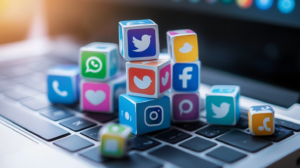 Facebook’s Attribution tool lets you see the big picture of how various marketing efforts on different platforms contribute to sales or other desired actions. Whether it’s paid advertising, organic social media, email marketing, or direct website traffic, these multi-channel insights enable you to see the combined impact of your marketing efforts.
Facebook’s Attribution tool lets you see the big picture of how various marketing efforts on different platforms contribute to sales or other desired actions. Whether it’s paid advertising, organic social media, email marketing, or direct website traffic, these multi-channel insights enable you to see the combined impact of your marketing efforts.
- Channel Overlaps: Understand where marketing channels overlap and interact, highlighting opportunities to refine targeting or adjust the messaging for better synergy.
- Incremental Impact: Measure the incremental impact of each channel to identify those that contribute the most to conversions.
Cross-Device Reporting
 In today’s multi-device world, users often interact with your brand on desktops, smartphones, and tablets before making a purchase. Facebook Attribution’s cross-device reporting helps you trace the customer journey across all devices, providing a more comprehensive view of user behavior and uncovering conversion opportunities.
In today’s multi-device world, users often interact with your brand on desktops, smartphones, and tablets before making a purchase. Facebook Attribution’s cross-device reporting helps you trace the customer journey across all devices, providing a more comprehensive view of user behavior and uncovering conversion opportunities.
- Device Transitions: Track how customers transition between devices and identify which platforms are more likely to drive conversions.
- Optimize for Cross-Device: Use insights to ensure that your ads are optimized for every device and that your website provides a seamless experience across platforms.
Setting Up Facebook Attribution
1. Connect Ad Accounts and Business Data:
Link all relevant Facebook ad accounts and business data, such as your CRM system, to provide the tool with a full dataset.
2. Select an Appropriate Attribution Window:
Choose an attribution window that matches your business cycle. Common options include 1, 7, and 28 days.
3. Analyze Performance through Various Models:
Use different attribution models to analyze campaign performance from multiple perspectives. Compare results to see which models provide the most accurate view of your customer journey.
 By effectively utilizing the Facebook Attribution tool, you can have a grasp of a comprehensive understanding of your campaigns’ performance, refine your marketing strategy, and attribute conversions more accurately across channels and devices.
By effectively utilizing the Facebook Attribution tool, you can have a grasp of a comprehensive understanding of your campaigns’ performance, refine your marketing strategy, and attribute conversions more accurately across channels and devices.
Best Practices for Facebook Analytics and Conversion Tracking
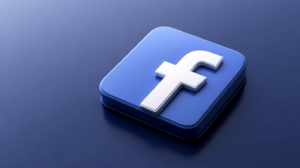
Define Clear Goals
Start by clearly outlining the goals you want to measure and ensure they align with your business objectives. Whether it’s driving sales, generating leads, or building brand awareness, having precise KPIs helps tailor your analytics and conversion tracking approach. This clarity enables focused campaign optimization and a better understanding of which metrics matter most.
Regularly Review Analytics
Make a habit of reviewing your analytics dashboard and conversion metrics weekly or bi-weekly. Regular analysis ensures that you catch any performance issues early and adapt to emerging trends quickly. By staying updated, you can keep your campaigns aligned with your goals and adjust strategies as needed.
Optimize for Mobile
Most Facebook users access the platform primarily through mobile devices, so it’s crucial to optimize your website and ads accordingly. Ensure that mobile users have a smooth experience by creating responsive landing pages and mobile-optimized ad creatives. This guarantees maximum engagement and conversion rates from mobile traffic.
Utilize Custom Audiences
Segmenting your audience allows for more accurate analysis and targeted campaigns. With Facebook’s Custom Audiences feature, you can target groups based on behavior, demographics, and past interactions. Use this data to retarget users who have shown interest and improve your conversion rates.
- A/B Testing
Test different creatives, messaging, and placements to discover what resonates best with your audience. A/B testing helps identify the most effective combinations that drive higher click-through rates, engagement, and conversions, enabling more refined campaign strategies.
Integrate Data Across Platforms
Sync your Facebook Analytics with Google Analytics and other tools to get a comprehensive view of customer behavior across different platforms. By taking this data-driven approach, marketers gain a complete picture of how customers interact with their brand across various channels. This allows them to create a seamless and effective multi-channel marketing strategy.
- Data Hygiene
Regularly audit your pixel tags to ensure the data captured is accurate and complete. Check for redundant or erroneous tags that could skew your insights, ensuring that decisions are based on clean data.
By adhering to these best practices, you’ll maximize the value of Facebook Analytics and conversion tracking, leading to improved campaign performance and a stronger marketing strategy.
Monitoring and Reporting Your Results

Creating Dashboards
Creating custom dashboards is essential for efficiently visualizing data relevant to your Facebook campaigns. By building dashboards tailored to your goals, you can easily monitor campaign performance at a glance. Include key metrics like conversions, click-through rates, and return on ad spend (ROAS). By creating custom dashboards, you can zero in on the key metrics for your campaigns and display them in a clear and concise way that’s easy for everyone involved to understand.
Schedule Regular Reporting
Consistent reporting is crucial for tracking progress and maintaining clarity. Produce weekly or monthly reports that highlight key metrics, trends, and insights. Weekly reports help detect early signs of success or problems, enabling timely adjustments. Monthly reports provide a broader perspective, revealing long-term patterns and performance trends that inform strategic planning.
- Analyze Long-Term Trends
Instead of focusing solely on immediate metrics, take a step back to analyze how your campaigns impact long-term brand awareness and customer loyalty. For instance, consider whether increased engagement has led to more followers over time or if promotions have affected repeat purchases. Long-term analysis helps identify strategies that promote sustained growth, ensuring that short-term gains translate into lasting results.
- Pivoting Based on Insights
A flexible approach is crucial for effective marketing. Always be ready to adjust your methods based on performance data to continuously improve results. For instance, if data reveals that certain creatives underperform, pivot by refining the design or message. If specific audience segments show low engagement, test new targeting parameters. This iterative approach ensures campaigns remain aligned with your goals.
- Benchmarking
Comparing your performance with industry benchmarks helps gauge your present standing and identify areas for improvement. Benchmarking provides context to your results, helping you understand whether a certain click-through rate or conversion cost is above or below average for your sector. Use this information to set realistic goals and uncover opportunities to optimize.
Executive Summaries
Prepare executive summaries that clearly communicate performance to stakeholders who may not be familiar with the technical details. Use visualizations like graphs and charts to summarize key data points, providing an at-a-glance understanding of campaign effectiveness. Focus on the most relevant insights and their implications to ensure that stakeholders can make informed strategic decisions.
By creating effective dashboards, maintaining regular reporting, and staying flexible in your strategy, you’ll build a robust system for monitoring and improving your Facebook marketing campaigns. This comprehensive approach leads to data-driven decision-making that maximizes ROI and drives sustainable growth.
Conclusion
 Mastering Facebook Analytics and conversion tracking is essential for any marketer aiming to attribute sales and leads back to their efforts. By utilizing tools like Facebook Attribution, pixel tracking, and detailed funnel analysis, by leveraging data and understanding customer journeys, marketers can refine their campaigns for maximum impact. Following the best practices outlined in this guide will help you maximize ROI, refine your marketing strategies, and align your campaigns with your business objectives. While the process may seem complex, the rewards of correctly attributing conversions to your Facebook marketing efforts are invaluable, ensuring that every dollar spent is delivering measurable value to your bottom line.
Mastering Facebook Analytics and conversion tracking is essential for any marketer aiming to attribute sales and leads back to their efforts. By utilizing tools like Facebook Attribution, pixel tracking, and detailed funnel analysis, by leveraging data and understanding customer journeys, marketers can refine their campaigns for maximum impact. Following the best practices outlined in this guide will help you maximize ROI, refine your marketing strategies, and align your campaigns with your business objectives. While the process may seem complex, the rewards of correctly attributing conversions to your Facebook marketing efforts are invaluable, ensuring that every dollar spent is delivering measurable value to your bottom line.
Remember, the landscape of digital marketing is ever-changing, and staying agile by frequently reviewing analytics, experimenting with attribution models, and adjusting strategies will ensure your brand remains competitive and successful on Facebook.
References
- Ultimate Guide to Digital Marketing Funnels for Every Small Business in 2024 | Rollco Digital. https://rollcodigital.com/blogs/digital-marketing-funnels-for-every-small-business-in-2024/
- Digital Marketing Glossary • Digital Marketing Specialist. https://rod.marketing/digital-marketing-glossary/
- 4 Tips to Lower Your Search Advertising Costs [New Data] – Creatopy. https://www.creatopy.com/blog/how-to-lower-search-advertising-costs/
- TikTok Influence: 3 Creative Impacts on Facebook Ads. https://618media.com/en/blog/tiktok-influence-impacts-facebook-ads/
- Driving Business Growth: Strategies for Effective Marketing on Facebook Ads – Wickland. https://wickland.net/strategies-for-effective-marketing-on-facebook-ads/
- What is OTT Advertising: Getting Started with Streaming Ads. https://www.cognitionads.com/blog/what-is-ott-advertising-getting-started-with-streaming-ads
- Choosing the Right Attribution Model for Your Business: A Comprehensive Guide – LeadsRx Attribution. https://leadsrx.com/resources/blog/choosing-the-right-attribution-model-for-your-business-a-comprehensive-guide/
- Data Analytics – How To Succeed In 2023 | Ormi Media. https://ormi-media.com/blog/data-analytics-marketing-strategy-optimization/
Latest Blogs

Present Simple Tense 1
English Blogs “Let’s Learn, Explore, and Connect to the World” Present Simple Tense 1 I. Introduction to the Present Simple Tense in English Mastering the

Present Simple Tense 2
English Blogs “Let’s Learn, Explore, and Connect to the World” Present Simple Tense 2 II. Understanding the Present Simple Tense Definition and Structure At its
Reading comprehension quiz
Check out our books and more!
A Beginner's Guide to Video Editing: Be a Pro in Just 24 Hours
Discover your inner editing abilities with this complete guide made for beginners to master the art of video editing smoothly. ‘A Beginner’s Guide to Video Editing: Be a Pro in Just 24 Hours’ is your way to discover the secrets of professional-grade editing within a day.
Check out our Blogs!
Read our everyday blogs and expand your knowledge about English and Video Editing here in SEKAEL.
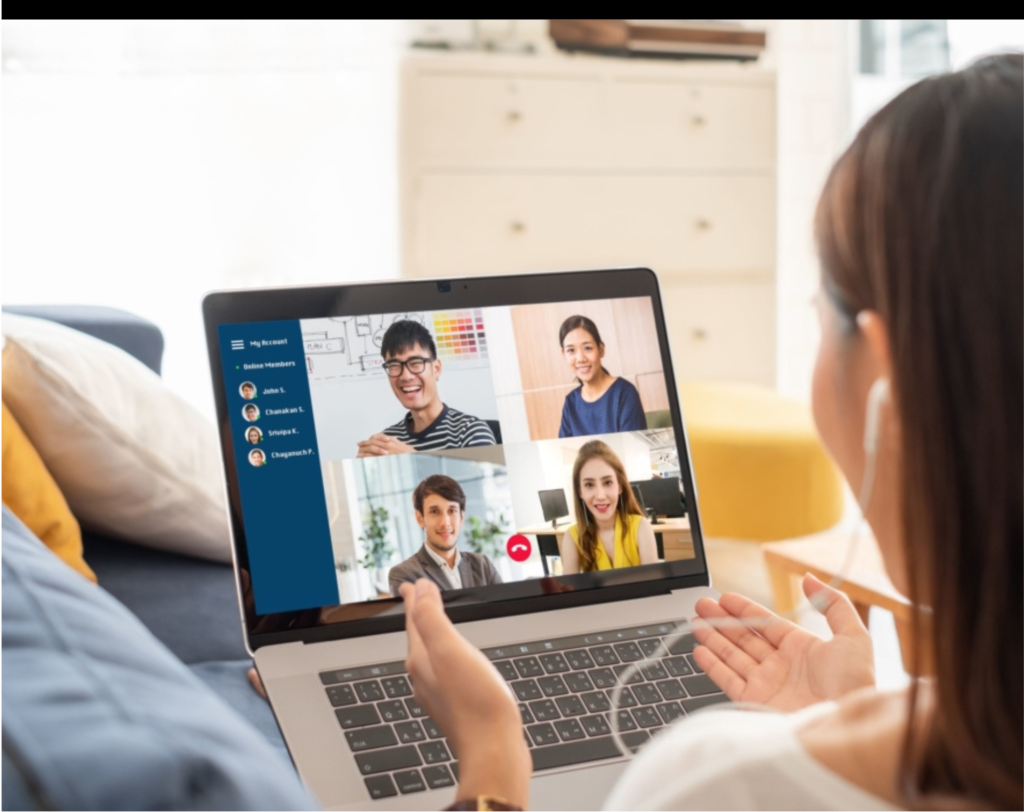

Learn through Basic English Grammar Blogs by widening your English vocabulary and learning English Grammar.
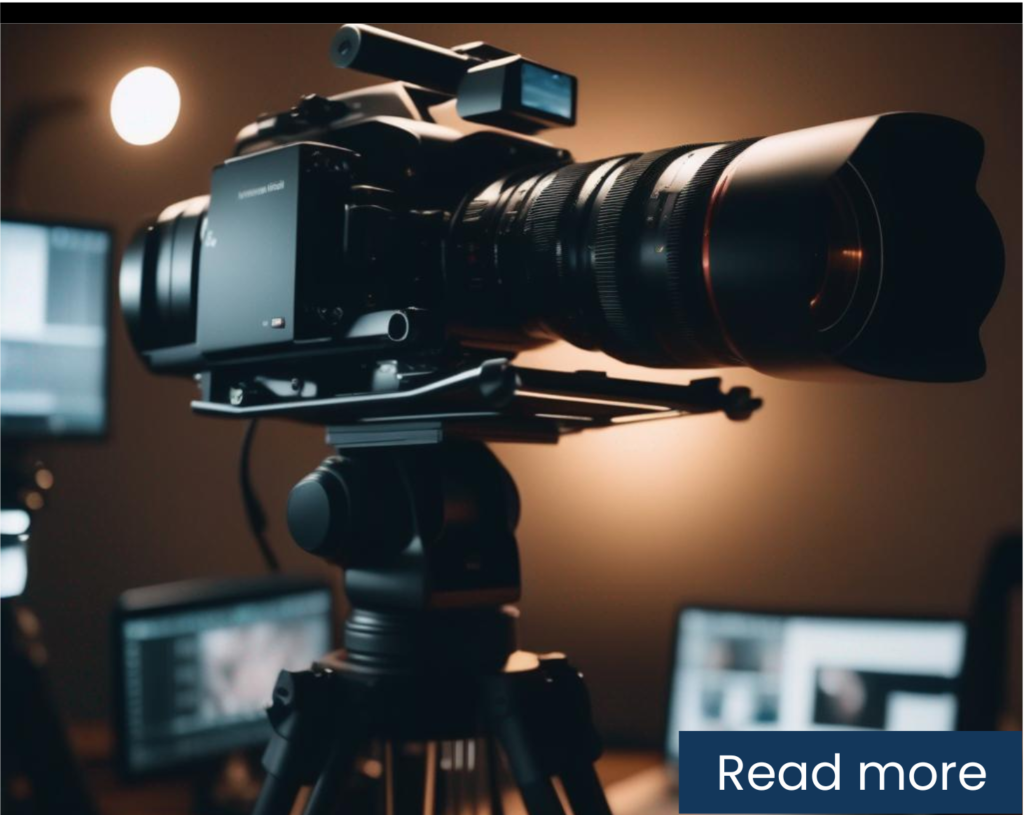




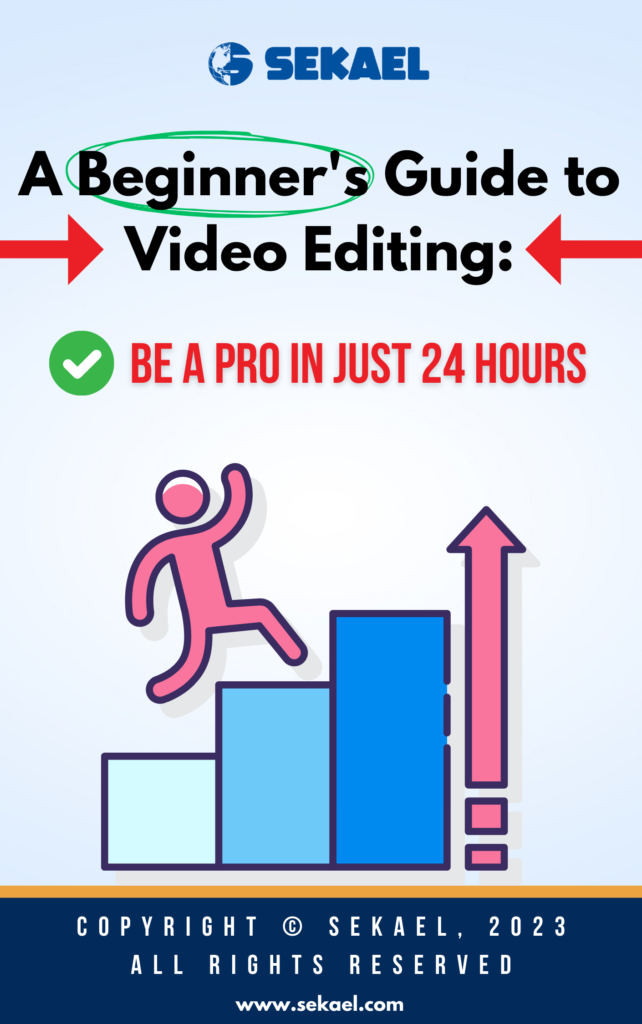


 The arena of digital marketing has completely changed over the last few years. This is because new technologies keep coming out and people’s habits on the internet keep evolving. Initially, digital marketing strategies were predominantly focused on email blasts and banner ads, which were broad in their approach and often missed the mark regarding personal connection and engagement. As the internet became more interactive and social media platforms emerged, marketers quickly recognized the potential of these new channels to connect more directly and meaningfully with audiences.
The arena of digital marketing has completely changed over the last few years. This is because new technologies keep coming out and people’s habits on the internet keep evolving. Initially, digital marketing strategies were predominantly focused on email blasts and banner ads, which were broad in their approach and often missed the mark regarding personal connection and engagement. As the internet became more interactive and social media platforms emerged, marketers quickly recognized the potential of these new channels to connect more directly and meaningfully with audiences. The importance of Facebook Messenger in today’s marketing landscape cannot be overstated. As consumers increasingly expect instant and personalized interactions, Messenger’s role continues to grow as a necessary and dynamic platform for effective digital marketing. This blog will explore how businesses can get the most out of Facebook Messenger not just to communicate but to connect and convert, transforming everyday interactions into lasting customer relationships.
The importance of Facebook Messenger in today’s marketing landscape cannot be overstated. As consumers increasingly expect instant and personalized interactions, Messenger’s role continues to grow as a necessary and dynamic platform for effective digital marketing. This blog will explore how businesses can get the most out of Facebook Messenger not just to communicate but to connect and convert, transforming everyday interactions into lasting customer relationships.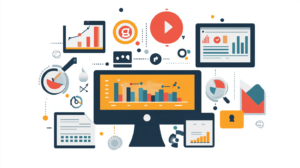
 Facebook Messenger boasts impressive statistics that highlight its potential as a marketing channel. Here are some key figures:
Facebook Messenger boasts impressive statistics that highlight its potential as a marketing channel. Here are some key figures: Marketing through Facebook Messenger provides numerous benefits for companies aiming to improve their digital marketing efforts. The platform not only facilitates communication with vast audiences but also ensures that these interactions are more personalized and engaging. Here are some of the key benefits:
Marketing through Facebook Messenger provides numerous benefits for companies aiming to improve their digital marketing efforts. The platform not only facilitates communication with vast audiences but also ensures that these interactions are more personalized and engaging. Here are some of the key benefits: One of the foremost benefits of using Facebook Messenger for marketing is the ability to communicate with customers instantly. Unlike traditional methods that often involve delays (such as email where responses can take hours or even days), Messenger allows for real-time dialogue. This immediacy can be crucial during various stages of the customer journey, especially when consumers are making purchasing decisions or need urgent support. Instant communication helps maintain the flow of conversation, mimicking the natural back-and-forth of in-person interactions, which can lead to quicker conversions and enhanced customer relations.
One of the foremost benefits of using Facebook Messenger for marketing is the ability to communicate with customers instantly. Unlike traditional methods that often involve delays (such as email where responses can take hours or even days), Messenger allows for real-time dialogue. This immediacy can be crucial during various stages of the customer journey, especially when consumers are making purchasing decisions or need urgent support. Instant communication helps maintain the flow of conversation, mimicking the natural back-and-forth of in-person interactions, which can lead to quicker conversions and enhanced customer relations. Messenger marketing excels in its capacity for message personalization. With access to data from users’ Facebook profiles and past interactions with the brand on the platform, businesses can tailor their communications to meet the particular preferences and requirements of every client. Personalized messages can include everything from addressing the customer by name to making recommendations based on previous purchases or browsing behavior. This level of customization makes the customer feel valued and understood, thereby increasing the effectiveness of the marketing efforts.
Messenger marketing excels in its capacity for message personalization. With access to data from users’ Facebook profiles and past interactions with the brand on the platform, businesses can tailor their communications to meet the particular preferences and requirements of every client. Personalized messages can include everything from addressing the customer by name to making recommendations based on previous purchases or browsing behavior. This level of customization makes the customer feel valued and understood, thereby increasing the effectiveness of the marketing efforts. The expectation for quick responses in today’s digital world is higher than ever. Facebook Messenger enables businesses to meet these expectations through automated responses or chatbots that can provide instant answers to common queries around the clock. For more complex inquiries, the platform facilitates a seamless handoff to human customer service representatives. This blend of automation and personal touch and ensures that customer inquiries are addressed promptly, significantly boosting customer satisfaction and loyalty.
The expectation for quick responses in today’s digital world is higher than ever. Facebook Messenger enables businesses to meet these expectations through automated responses or chatbots that can provide instant answers to common queries around the clock. For more complex inquiries, the platform facilitates a seamless handoff to human customer service representatives. This blend of automation and personal touch and ensures that customer inquiries are addressed promptly, significantly boosting customer satisfaction and loyalty.
 Implementing Facebook Messenger as a marketing tool involves several strategic steps that enable businesses to effectively communicate and engage with their customers. Here’s a guide to setting up and optimizing Messenger for marketing purposes.
Implementing Facebook Messenger as a marketing tool involves several strategic steps that enable businesses to effectively communicate and engage with their customers. Here’s a guide to setting up and optimizing Messenger for marketing purposes. The first step in utilizing Messenger for marketing is setting up a business account. This can be done through your existing Facebook Business Page. If you don’t already have one, you’ll need to create a Facebook Page for your business. Once your Page is set up, ensure that the Messenger feature is activated. You can then customize your Messenger settings, such as greeting texts and instant replies, to align with your business’s tone and customer engagement strategy.
The first step in utilizing Messenger for marketing is setting up a business account. This can be done through your existing Facebook Business Page. If you don’t already have one, you’ll need to create a Facebook Page for your business. Once your Page is set up, ensure that the Messenger feature is activated. You can then customize your Messenger settings, such as greeting texts and instant replies, to align with your business’s tone and customer engagement strategy.
 To manage interactions efficiently, especially if you anticipate a high volume of inquiries, employing automated tools like chatbots is advisable. Chatbots can handle common customer queries, provide information about products and services, and guide users through the purchasing process. These tools can be customized to reflect your brand’s voice and provide consistent, helpful service even when live agents are not available.
To manage interactions efficiently, especially if you anticipate a high volume of inquiries, employing automated tools like chatbots is advisable. Chatbots can handle common customer queries, provide information about products and services, and guide users through the purchasing process. These tools can be customized to reflect your brand’s voice and provide consistent, helpful service even when live agents are not available.


 With ongoing technological advancements, the realm of Messenger marketing is set to undergo substantial transformation. Here are a few predictions and emerging technologies that are likely to shape the future of this dynamic marketing channel.
With ongoing technological advancements, the realm of Messenger marketing is set to undergo substantial transformation. Here are a few predictions and emerging technologies that are likely to shape the future of this dynamic marketing channel. Facebook Messenger marketing has proven itself as a pivotal tool in the digital marketing arsenal, offering unparalleled opportunities for direct and personalized communication with customers. With its capacity for instant messaging, high engagement rates, and scalable automation through AI and chatbots, Messenger empowers businesses to connect with their audience in meaningful ways. As we look towards the future, the potential enhancements in technology promise even greater effectiveness and opportunities. Businesses looking to have an edge in the competitive digital landscape should consider adopting Messenger strategies to enhance customer interaction, drive engagement, and ultimately, boost conversion rates.
Facebook Messenger marketing has proven itself as a pivotal tool in the digital marketing arsenal, offering unparalleled opportunities for direct and personalized communication with customers. With its capacity for instant messaging, high engagement rates, and scalable automation through AI and chatbots, Messenger empowers businesses to connect with their audience in meaningful ways. As we look towards the future, the potential enhancements in technology promise even greater effectiveness and opportunities. Businesses looking to have an edge in the competitive digital landscape should consider adopting Messenger strategies to enhance customer interaction, drive engagement, and ultimately, boost conversion rates.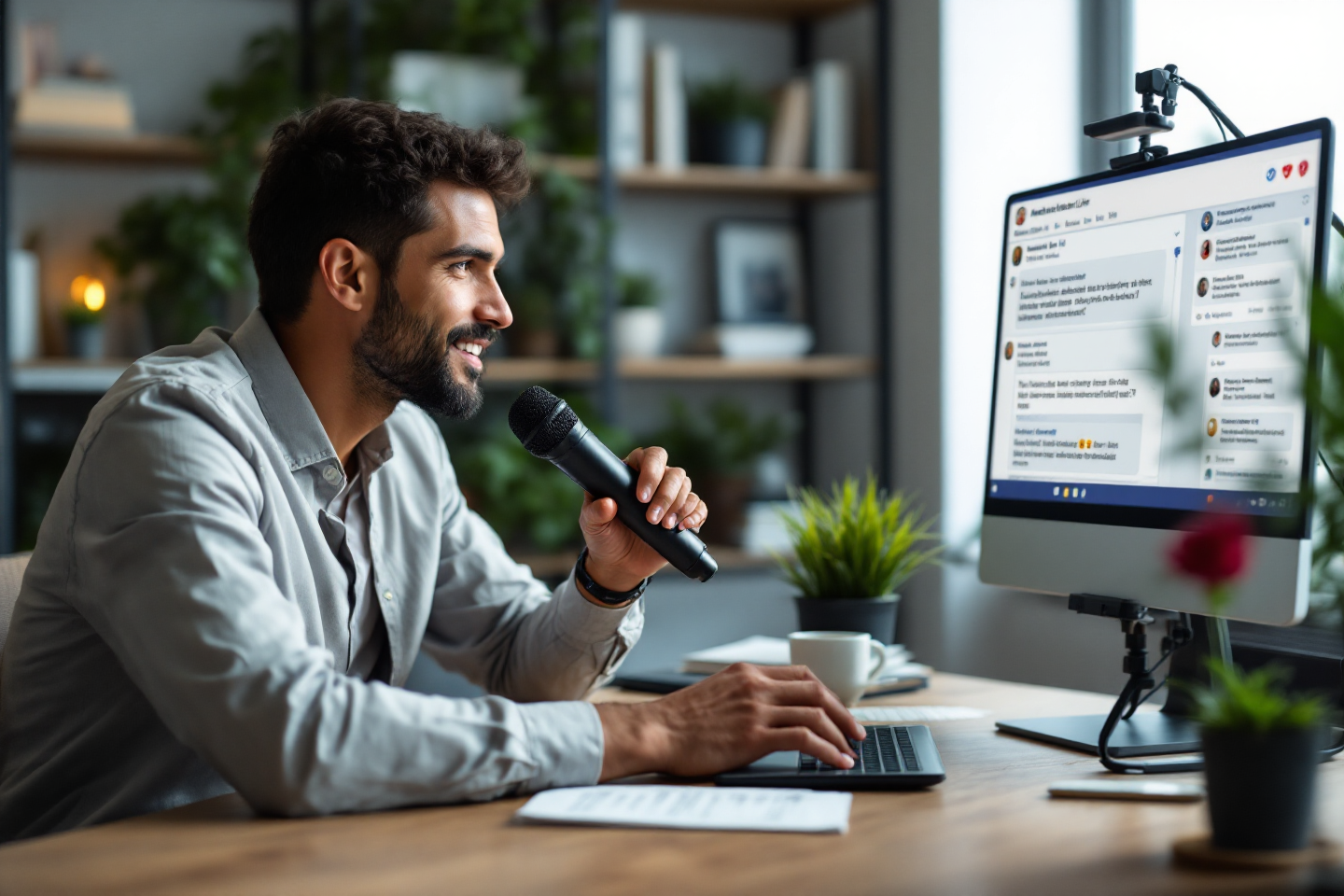
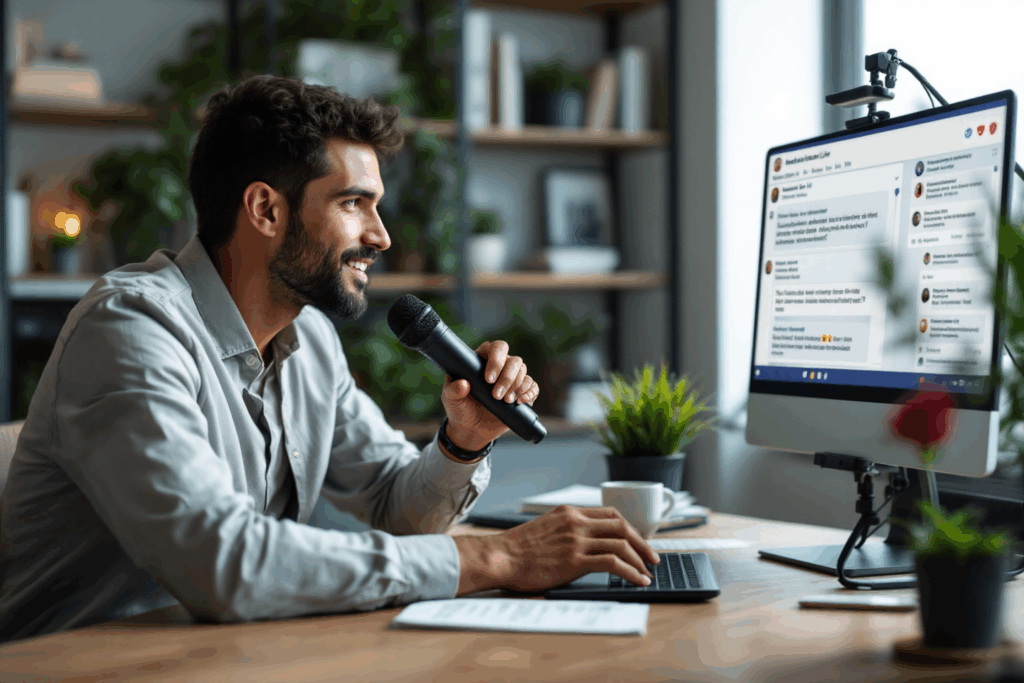
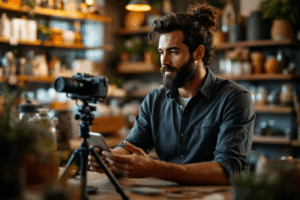
 Facebook Live serves as a critical component in modern marketing strategies, tapping into the growing consumer preference for live video. Studies have shown that users spend up to three times longer watching live videos when compared to pre-recorded ones, highlighting the compelling nature of real-time interaction. Businesses utilize this platform to host Q&A sessions, behind-the-scenes tours, product demonstrations, and more, effectively increasing engagement and boosting viewer retention. The immediate feedback loop created during live broadcasts provides invaluable insights into viewer preferences and behaviors, enabling marketers to refine their strategies promptly.
Facebook Live serves as a critical component in modern marketing strategies, tapping into the growing consumer preference for live video. Studies have shown that users spend up to three times longer watching live videos when compared to pre-recorded ones, highlighting the compelling nature of real-time interaction. Businesses utilize this platform to host Q&A sessions, behind-the-scenes tours, product demonstrations, and more, effectively increasing engagement and boosting viewer retention. The immediate feedback loop created during live broadcasts provides invaluable insights into viewer preferences and behaviors, enabling marketers to refine their strategies promptly.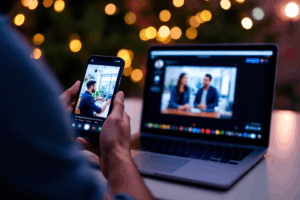 With Facebook Live, you can use your phone or computer to broadcast a live video directly on Facebook. This video will be shared live on your news feed for your friends and followers. Since its broader rollout in 2016, Facebook Live has become an integral tool for individuals, brands, and content creators aiming to engage their followers in real-time. This platform supports different types of content, from spontaneous broadcasts to highly produced events, making it versatile for various use cases.
With Facebook Live, you can use your phone or computer to broadcast a live video directly on Facebook. This video will be shared live on your news feed for your friends and followers. Since its broader rollout in 2016, Facebook Live has become an integral tool for individuals, brands, and content creators aiming to engage their followers in real-time. This platform supports different types of content, from spontaneous broadcasts to highly produced events, making it versatile for various use cases.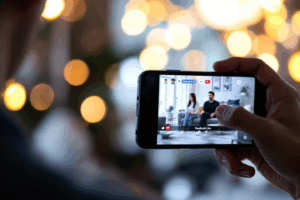
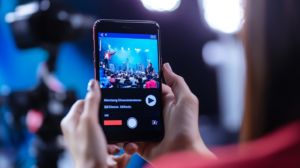 Effectively leveraging Facebook Live requires thorough planning and strategizing before going live. Successful broadcasts don’t happen by accident—they are the result of careful preparation, understanding the audience, and curating the content to match viewers’ interests and needs. Here’s how you can plan your Facebook Live session to maximize engagement and impact.
Effectively leveraging Facebook Live requires thorough planning and strategizing before going live. Successful broadcasts don’t happen by accident—they are the result of careful preparation, understanding the audience, and curating the content to match viewers’ interests and needs. Here’s how you can plan your Facebook Live session to maximize engagement and impact.



 Executing a successful Facebook Live broadcast requires not only engaging content but also a reliable technical setup. Having good equipment and software makes a big difference in both how good it looks and how smoothly it runs for you and your viewers.
Executing a successful Facebook Live broadcast requires not only engaging content but also a reliable technical setup. Having good equipment and software makes a big difference in both how good it looks and how smoothly it runs for you and your viewers.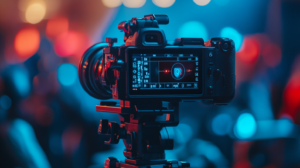
 Facebook Live lets you connect with viewers directly as you broadcast! This two-way street keeps your audience hooked and coming back for more. Effective engagement not only makes the broadcast more interactive and lively but also encourages viewers to participate and share the content. Here are some techniques to interact with your audience during the broadcast, along with examples of engaging live content formats.
Facebook Live lets you connect with viewers directly as you broadcast! This two-way street keeps your audience hooked and coming back for more. Effective engagement not only makes the broadcast more interactive and lively but also encourages viewers to participate and share the content. Here are some techniques to interact with your audience during the broadcast, along with examples of engaging live content formats.

 Facebook Live offers a dynamic tool for marketers to enhance their digital strategies by providing a platform for real-time customer engagement and content delivery. Integrating live video into your overall marketing strategy can increase reach, engagement, and conversion rates, especially when it is part of a comprehensive and interactive campaign.
Facebook Live offers a dynamic tool for marketers to enhance their digital strategies by providing a platform for real-time customer engagement and content delivery. Integrating live video into your overall marketing strategy can increase reach, engagement, and conversion rates, especially when it is part of a comprehensive and interactive campaign.

 After a Facebook Live session concludes, the opportunity to connect with your audience and leverage the content you’ve created continues. Effective post-broadcast practices can help maximize the impact of your live session, maintain audience interest, and improve future broadcasts based on performance insights.
After a Facebook Live session concludes, the opportunity to connect with your audience and leverage the content you’ve created continues. Effective post-broadcast practices can help maximize the impact of your live session, maintain audience interest, and improve future broadcasts based on performance insights.
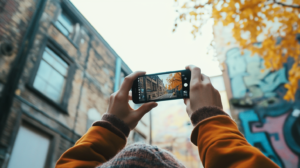
 Throughout this guide, we’ve explored the dynamic capabilities of Facebook Live as an indispensable tool for video marketing. From strategic planning and technical setup to engaging real-time interaction and effective post-broadcast practices, Facebook Live offers a comprehensive platform for connecting with audiences authentically and immediately. The success stories of brands like BuzzFeed, Benefit Cosmetics, and Tough Mudder underscores its potential to transform marketing strategies and foster deeper audience relationships. Embrace Facebook Live to elevate your marketing efforts; its direct engagement capabilities can significantly enhance your brand’s visibility and interaction in today’s digital landscape.
Throughout this guide, we’ve explored the dynamic capabilities of Facebook Live as an indispensable tool for video marketing. From strategic planning and technical setup to engaging real-time interaction and effective post-broadcast practices, Facebook Live offers a comprehensive platform for connecting with audiences authentically and immediately. The success stories of brands like BuzzFeed, Benefit Cosmetics, and Tough Mudder underscores its potential to transform marketing strategies and foster deeper audience relationships. Embrace Facebook Live to elevate your marketing efforts; its direct engagement capabilities can significantly enhance your brand’s visibility and interaction in today’s digital landscape.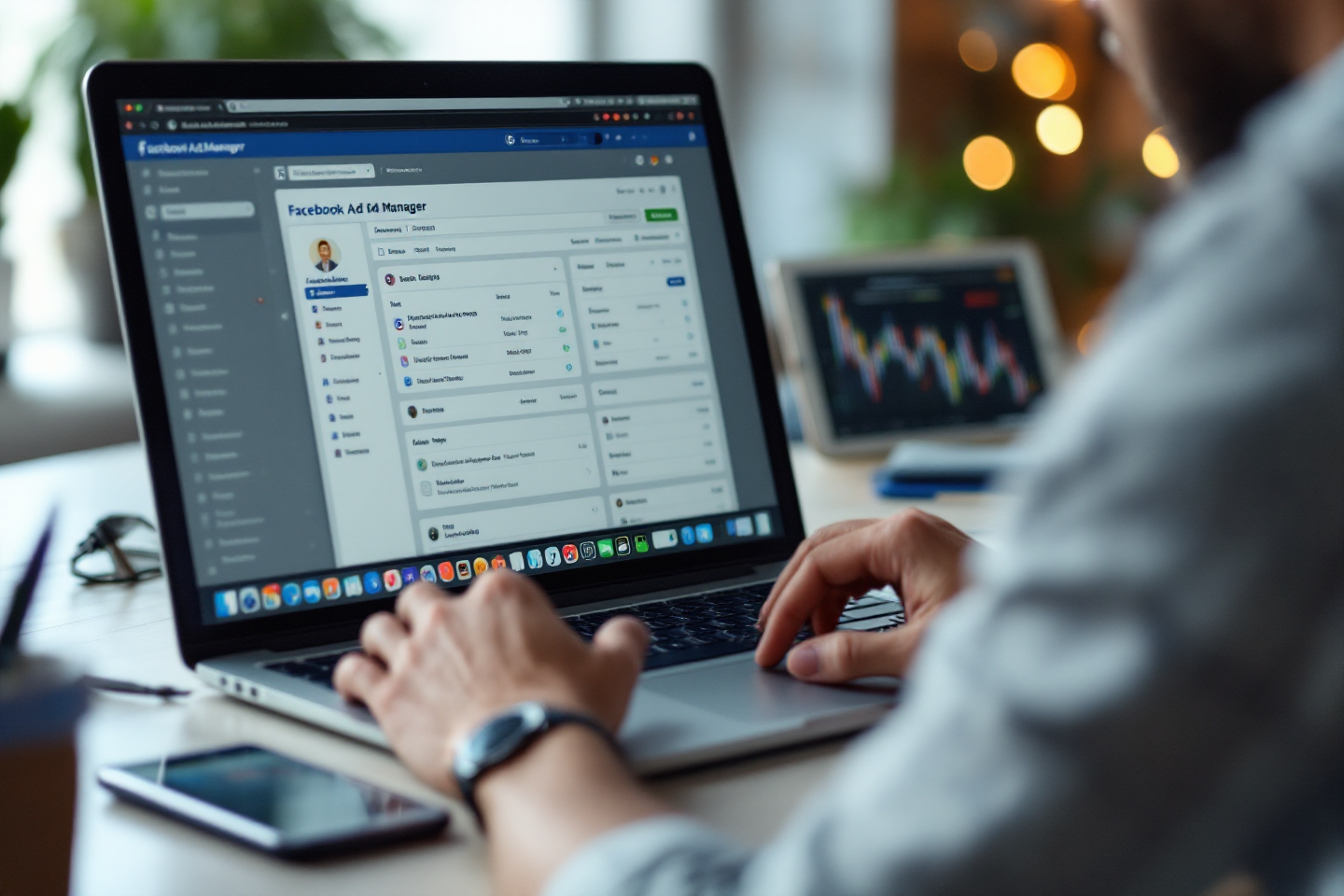
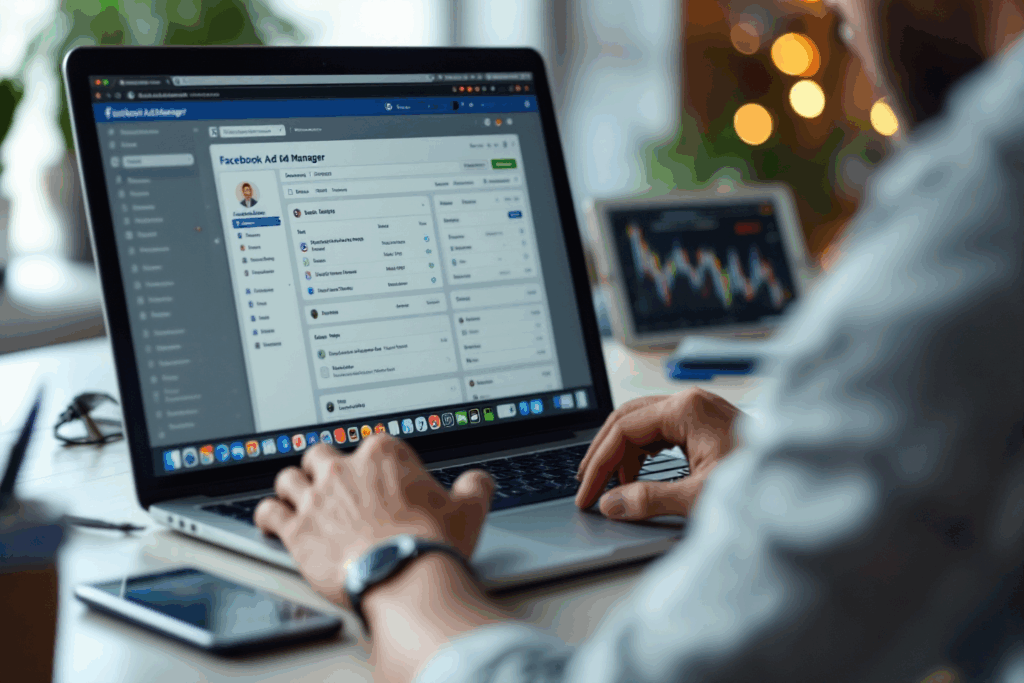
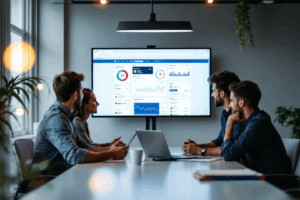 In the digital age, advertising has transcended traditional boundaries, evolving into a dynamic force that drives consumer behavior and business growth. Among the myriad of digital marketing strategies, targeted advertising stands out as a cornerstone, enabling businesses to deliver their messages to the right audience at the right time. This precision not only enhances the effectiveness of campaigns but also maximizes return on investment by minimizing the wastage of resources on uninterested parties.
In the digital age, advertising has transcended traditional boundaries, evolving into a dynamic force that drives consumer behavior and business growth. Among the myriad of digital marketing strategies, targeted advertising stands out as a cornerstone, enabling businesses to deliver their messages to the right audience at the right time. This precision not only enhances the effectiveness of campaigns but also maximizes return on investment by minimizing the wastage of resources on uninterested parties.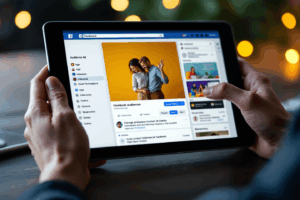 With billions of users and robust data analysis, Facebook reigns supreme in online advertising. It provides marketers with an unmatched reach across various demographics, making it crucial for targeting specific audiences. Facebook’s advanced ad tools allow for precise targeting based on factors like age, interests, and online behavior, guaranteeing that ads reach the most relevant viewers.
With billions of users and robust data analysis, Facebook reigns supreme in online advertising. It provides marketers with an unmatched reach across various demographics, making it crucial for targeting specific audiences. Facebook’s advanced ad tools allow for precise targeting based on factors like age, interests, and online behavior, guaranteeing that ads reach the most relevant viewers. Facebook Ads represent one of the most powerful tools in the digital marketer’s arsenal. They leverage Facebook’s extensive user network to deliver tailored advertisements directly to a selected audience. This system operates within the Facebook platform, including Instagram and Messenger, allowing advertisers to place their messages in front of users not just based on traditional ad spaces but also integrated naturally into their social feeds.
Facebook Ads represent one of the most powerful tools in the digital marketer’s arsenal. They leverage Facebook’s extensive user network to deliver tailored advertisements directly to a selected audience. This system operates within the Facebook platform, including Instagram and Messenger, allowing advertisers to place their messages in front of users not just based on traditional ad spaces but also integrated naturally into their social feeds.
 Facebook ads go far and wide, reaching nearly everyone on the planet. Powerful targeting tools pinpoint the right audience using all sorts of info – age, location, what they’re into, and even how they use Facebook. Plus, Facebook’s innovative system prioritizes showing your ads to people most likely to care, so you get the biggest bang for your buck.
Facebook ads go far and wide, reaching nearly everyone on the planet. Powerful targeting tools pinpoint the right audience using all sorts of info – age, location, what they’re into, and even how they use Facebook. Plus, Facebook’s innovative system prioritizes showing your ads to people most likely to care, so you get the biggest bang for your buck.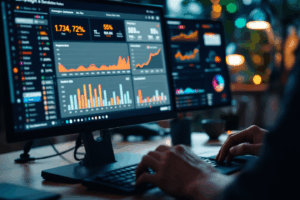 Facebook goes beyond just showing your ads to a lot of people—it helps you see how well they’re working, too. With its analytics tools, you can track your campaigns in real time, see who sees your ads, and even measure whether people are taking the actions you want. This lets you constantly improve your marketing strategy to get the best results.
Facebook goes beyond just showing your ads to a lot of people—it helps you see how well they’re working, too. With its analytics tools, you can track your campaigns in real time, see who sees your ads, and even measure whether people are taking the actions you want. This lets you constantly improve your marketing strategy to get the best results. In the digital marketing world, the scattergun approach of traditional advertising is being swiftly replaced by targeted advertising. This strategy is essential not only for maximizing the effectiveness of advertising campaigns but also for enhancing user experience by aligning content with user preferences and needs.
In the digital marketing world, the scattergun approach of traditional advertising is being swiftly replaced by targeted advertising. This strategy is essential not only for maximizing the effectiveness of advertising campaigns but also for enhancing user experience by aligning content with user preferences and needs. Through Facebook ads, marketers can achieve a high degree of granularity in their advertising efforts, making them an essential element of modern digital marketing strategies. Whether the goal is to increase brand recognition, boost website traffic, or drive sales, Facebook’s sophisticated targeting capabilities make it possible to achieve these objectives with remarkable efficiency and effectiveness.
Through Facebook ads, marketers can achieve a high degree of granularity in their advertising efforts, making them an essential element of modern digital marketing strategies. Whether the goal is to increase brand recognition, boost website traffic, or drive sales, Facebook’s sophisticated targeting capabilities make it possible to achieve these objectives with remarkable efficiency and effectiveness. Demographic targeting involves segmenting the market based on attributes such as age, gender, location, marital status, education level, and more. Facebook, with its vast database, offers advertisers the ability to zero in on these demographics with precision, crafting messages that resonate with each group’s unique preferences and lifestyles.
Demographic targeting involves segmenting the market based on attributes such as age, gender, location, marital status, education level, and more. Facebook, with its vast database, offers advertisers the ability to zero in on these demographics with precision, crafting messages that resonate with each group’s unique preferences and lifestyles. Age:
Age: 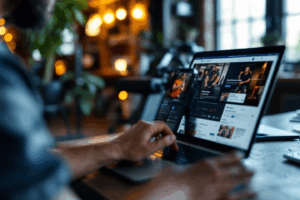 Location: Geo-targeting allows ads to be shown to users based on specific locations, from broad regions to particular cities or even neighborhoods. This is particularly useful for local businesses that want to attract nearby customers, such as restaurants or retail stores. A local gym might target ads to Facebook users within a 10-mile radius to drive local sign-ups.
Location: Geo-targeting allows ads to be shown to users based on specific locations, from broad regions to particular cities or even neighborhoods. This is particularly useful for local businesses that want to attract nearby customers, such as restaurants or retail stores. A local gym might target ads to Facebook users within a 10-mile radius to drive local sign-ups.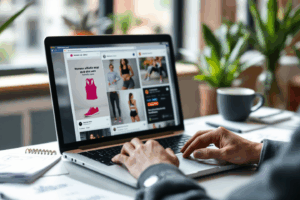 Gender: Products or services often appeal more to one gender than another. For instance, a brand that sells women’s athletic wear will target female Facebook users to increase the relevance and effectiveness of their advertising.
Gender: Products or services often appeal more to one gender than another. For instance, a brand that sells women’s athletic wear will target female Facebook users to increase the relevance and effectiveness of their advertising.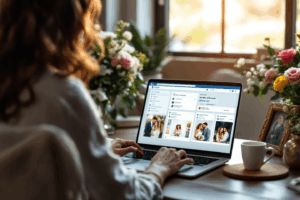 Marital Status: This can be a crucial factor in marketing products related to relationship stages, such as wedding services targeting engaged users or baby products aimed at newly married couples.
Marital Status: This can be a crucial factor in marketing products related to relationship stages, such as wedding services targeting engaged users or baby products aimed at newly married couples. Education Level: Targeting based on education can help tailor the messaging and product offerings based on the audience’s educational background. For example, educational software for advanced learning can be targeted at users who have indicated a higher education level.
Education Level: Targeting based on education can help tailor the messaging and product offerings based on the audience’s educational background. For example, educational software for advanced learning can be targeted at users who have indicated a higher education level.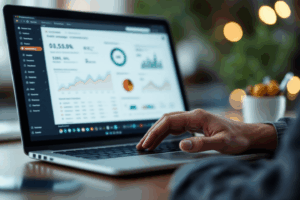
 However, demographic targeting does have its limitations. Relying solely on demographic data might lead to assumptions that overlook the diversity within each group. Users within the same demographic can have vastly different interests and behaviors, which means advertisers might miss potential customers who fall outside their targeted demographics but may still be interested in the product.
However, demographic targeting does have its limitations. Relying solely on demographic data might lead to assumptions that overlook the diversity within each group. Users within the same demographic can have vastly different interests and behaviors, which means advertisers might miss potential customers who fall outside their targeted demographics but may still be interested in the product. Interest-based targeting is a powerful method that Facebook offers to help advertisers reach users based on their hobbies, likes, and activities on the platform. This approach goes beyond demographic factors, diving deeper into the audience’s psyche and preferences, allowing for more personalized and relevant advertising.
Interest-based targeting is a powerful method that Facebook offers to help advertisers reach users based on their hobbies, likes, and activities on the platform. This approach goes beyond demographic factors, diving deeper into the audience’s psyche and preferences, allowing for more personalized and relevant advertising.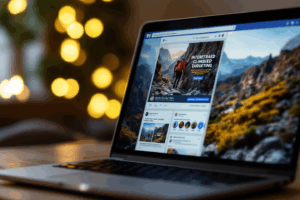
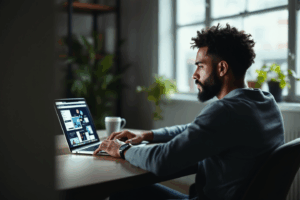

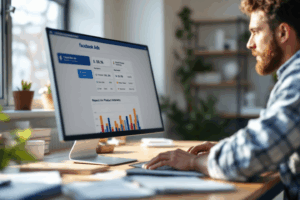 Information on past purchases, both on and off Facebook, gives advertisers clues about what products users might be interested in buying again.
Information on past purchases, both on and off Facebook, gives advertisers clues about what products users might be interested in buying again.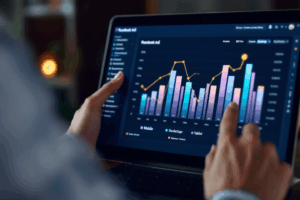 Data on whether users access Facebook from mobile devices, desktops, or tablets, helping tailor ads to the device most commonly used.
Data on whether users access Facebook from mobile devices, desktops, or tablets, helping tailor ads to the device most commonly used.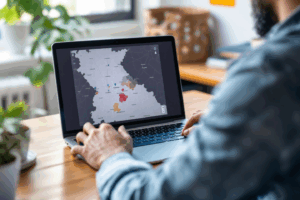 Tracks indications of recent travels or regular commuting, useful for local businesses or travel-related services.
Tracks indications of recent travels or regular commuting, useful for local businesses or travel-related services. Insights into which types of posts and ads users have interacted with in the past, including likes, shares, and comments.
Insights into which types of posts and ads users have interacted with in the past, including likes, shares, and comments.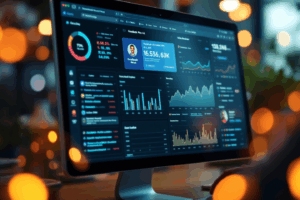 Data collected from websites and apps connected with Facebook, through tools like Facebook Pixel and SDK, which track user interactions outside of Facebook itself.
Data collected from websites and apps connected with Facebook, through tools like Facebook Pixel and SDK, which track user interactions outside of Facebook itself.
 The balance between broad and narrow targeting is crucial. Too broad, and you risk diluting your message across an audience that may not be interested; too narrow, and you may miss potential customers who could convert if given the chance. The goal is to find a sweet spot where the targeting is specific enough to be relevant yet not so exclusive that it omits potential leads. This balance maximizes both reach and relevance, ensuring optimal use of your advertising budget.
The balance between broad and narrow targeting is crucial. Too broad, and you risk diluting your message across an audience that may not be interested; too narrow, and you may miss potential customers who could convert if given the chance. The goal is to find a sweet spot where the targeting is specific enough to be relevant yet not so exclusive that it omits potential leads. This balance maximizes both reach and relevance, ensuring optimal use of your advertising budget.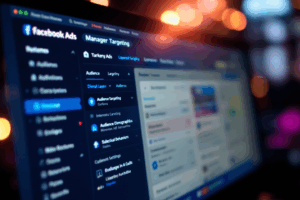
 The integration of these targeting strategies enables marketers to craft campaigns that are not just seen but are also relevant and compelling to the audience they reach. This relevance is key to driving higher engagement rates, increasing conversions, and ultimately maximizing the return on investment in advertising spend.
The integration of these targeting strategies enables marketers to craft campaigns that are not just seen but are also relevant and compelling to the audience they reach. This relevance is key to driving higher engagement rates, increasing conversions, and ultimately maximizing the return on investment in advertising spend.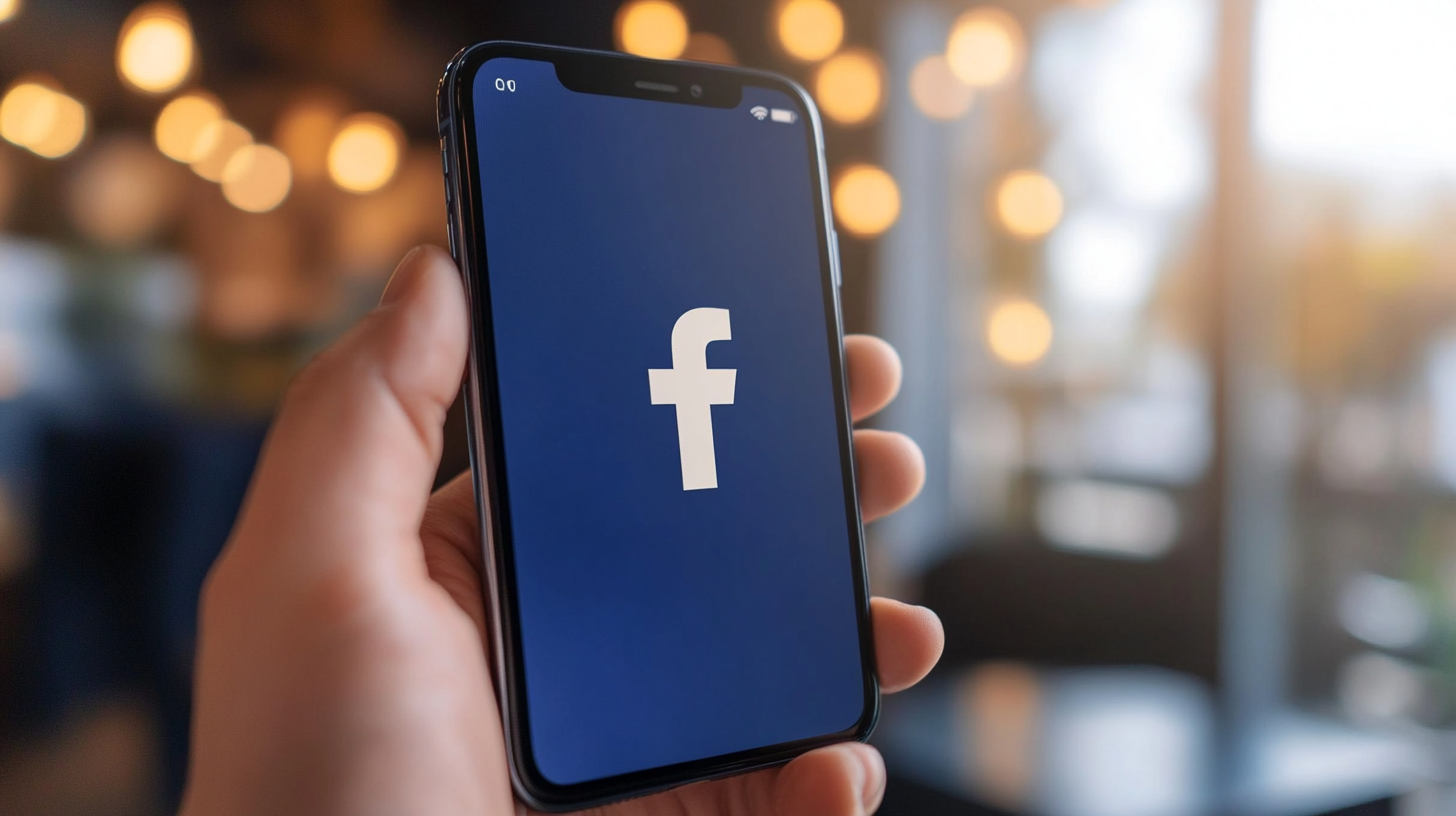
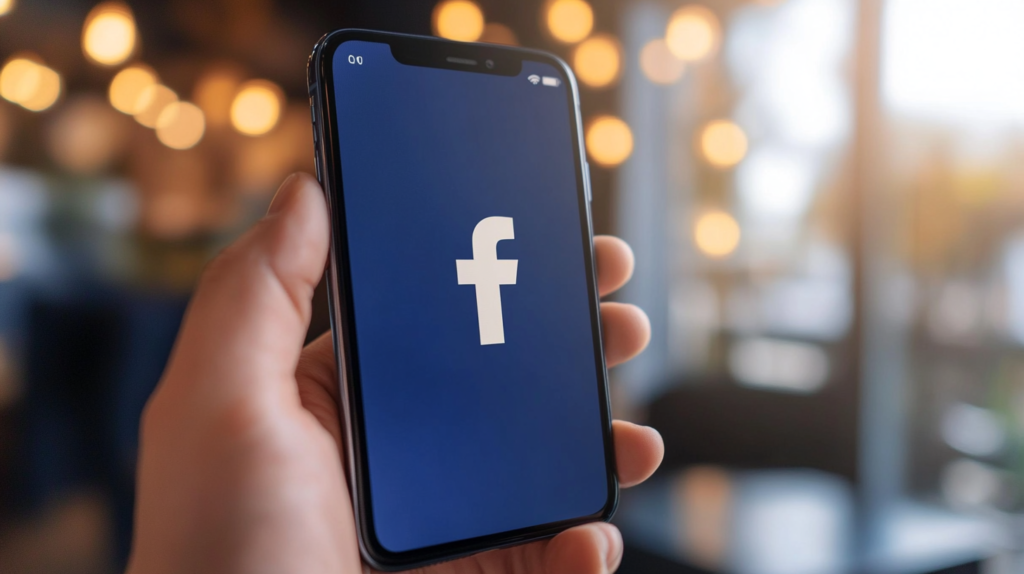
 The rise of social media in the last twenty years has revolutionized marketing.
The rise of social media in the last twenty years has revolutionized marketing. Facebook Groups serve as virtual communities where members can discuss various topics, share content, and interact not just with the brand but also with each other. This setting creates a unique opportunity for businesses to foster deeper relationships with their audience, transforming customers into active community members. Brands can leverage these groups to conduct market research, gather feedback, test new ideas, and improve customer loyalty by providing exclusive experiences and information. Moreover, the algorithmic preference that Facebook gives to group activity ensures higher engagement rates, making these groups a valuable tool for maintaining visibility in users’ feeds.
Facebook Groups serve as virtual communities where members can discuss various topics, share content, and interact not just with the brand but also with each other. This setting creates a unique opportunity for businesses to foster deeper relationships with their audience, transforming customers into active community members. Brands can leverage these groups to conduct market research, gather feedback, test new ideas, and improve customer loyalty by providing exclusive experiences and information. Moreover, the algorithmic preference that Facebook gives to group activity ensures higher engagement rates, making these groups a valuable tool for maintaining visibility in users’ feeds.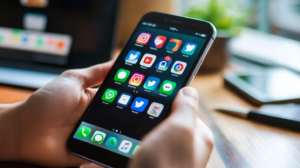 In today’s ever-evolving digital world, Facebook remains a cornerstone of social media marketing due to its vast global user base and robust engagement tools. Among these tools, Facebook Groups stand out as particularly effective for brands looking to deepen their consumer relationships and foster community spirit. Unlike traditional Facebook Pages that are designed for broadcasting messages, Groups offer a platform for two-way interactions that can significantly enhance user engagement and brand loyalty.
In today’s ever-evolving digital world, Facebook remains a cornerstone of social media marketing due to its vast global user base and robust engagement tools. Among these tools, Facebook Groups stand out as particularly effective for brands looking to deepen their consumer relationships and foster community spirit. Unlike traditional Facebook Pages that are designed for broadcasting messages, Groups offer a platform for two-way interactions that can significantly enhance user engagement and brand loyalty.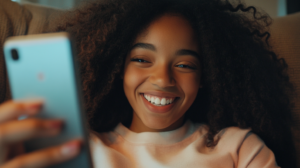 Facebook Groups excel at creating a space for active interaction among members. Groups are designed to be communities around shared interests, which naturally encourages more frequent and meaningful interactions among members. Statistics highlight that posts in Facebook Groups have a higher chance of appearing in a member’s feed compared to posts from a page. This is due to Facebook’s algorithm, which prioritizes content from Groups where users interact more regularly. For instance, according to data from Facebook, active group members are likely to spend more time on the platform and engage with content more intensely than the average user. This heightened engagement is crucial not only for keeping the audience interested but also for increasing the visibility of the brand’s content without the direct cost of advertising.
Facebook Groups excel at creating a space for active interaction among members. Groups are designed to be communities around shared interests, which naturally encourages more frequent and meaningful interactions among members. Statistics highlight that posts in Facebook Groups have a higher chance of appearing in a member’s feed compared to posts from a page. This is due to Facebook’s algorithm, which prioritizes content from Groups where users interact more regularly. For instance, according to data from Facebook, active group members are likely to spend more time on the platform and engage with content more intensely than the average user. This heightened engagement is crucial not only for keeping the audience interested but also for increasing the visibility of the brand’s content without the direct cost of advertising.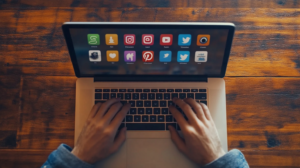 Facebook Groups also allow brands to segment their audiences into more targeted communities. For example, a brand can create groups based on product lines, user demographics, or even levels of brand loyalty. This segmentation enables more tailored communication strategies and can help brands deliver more personalized and relevant content. Such relevance increases the value of each interaction to the members, fostering a stronger connection to the brand.
Facebook Groups also allow brands to segment their audiences into more targeted communities. For example, a brand can create groups based on product lines, user demographics, or even levels of brand loyalty. This segmentation enables more tailored communication strategies and can help brands deliver more personalized and relevant content. Such relevance increases the value of each interaction to the members, fostering a stronger connection to the brand.
 Identifying your target audience and strategically setting up your Facebook Group is crucial for maximizing its effectiveness as a digital marketing tool. While creating a Group is simple, this guide will walk you through the steps and tips on choosing the right settings and establishing group rules to foster a positive and engaging environment for your ideal members.
Identifying your target audience and strategically setting up your Facebook Group is crucial for maximizing its effectiveness as a digital marketing tool. While creating a Group is simple, this guide will walk you through the steps and tips on choosing the right settings and establishing group rules to foster a positive and engaging environment for your ideal members.

 Engaging the members of a Facebook Group is crucial to its success. Active and engaged groups can significantly amplify brand visibility and loyalty. To achieve this, brands must employ strategic practices that foster interaction and maximize Facebook’s numerous features designed to boost user activity. Here are some best practices and content ideas for initiating and maintaining engagement in Facebook Groups.
Engaging the members of a Facebook Group is crucial to its success. Active and engaged groups can significantly amplify brand visibility and loyalty. To achieve this, brands must employ strategic practices that foster interaction and maximize Facebook’s numerous features designed to boost user activity. Here are some best practices and content ideas for initiating and maintaining engagement in Facebook Groups.
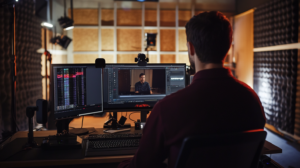

 Facebook Groups are not just platforms for conversation; they are potent tools for building deep, lasting brand loyalty. Brands can transform casual followers into staunch advocates through personalized interactions and a strong sense of community. Below, we explore how some brands have successfully built communities, the techniques for personalizing interactions, and ways to measure the impact of these engagements on brand loyalty.
Facebook Groups are not just platforms for conversation; they are potent tools for building deep, lasting brand loyalty. Brands can transform casual followers into staunch advocates through personalized interactions and a strong sense of community. Below, we explore how some brands have successfully built communities, the techniques for personalizing interactions, and ways to measure the impact of these engagements on brand loyalty.




 Managing Facebook Groups effectively presents several challenges that can hinder their potential as tools for building brand loyalty and engagement. Here, we discuss some common obstacles and provide practical solutions to help brands overcome these hurdles.
Managing Facebook Groups effectively presents several challenges that can hinder their potential as tools for building brand loyalty and engagement. Here, we discuss some common obstacles and provide practical solutions to help brands overcome these hurdles.

 Facebook Groups have become a vital component of digital marketing strategies for many brands, offering a unique way to engage directly with customers and cultivate a community. As we look to the future, several trends and potential changes could shape how Facebook manages or prioritizes these groups, further influencing their role in broader digital marketing campaigns.
Facebook Groups have become a vital component of digital marketing strategies for many brands, offering a unique way to engage directly with customers and cultivate a community. As we look to the future, several trends and potential changes could shape how Facebook manages or prioritizes these groups, further influencing their role in broader digital marketing campaigns.
 Facebook Groups can serve multiple functions in a digital marketing strategy, transcending traditional advertising by creating a genuine sense of community among users. Here’s how they fit into the broader marketing landscape:
Facebook Groups can serve multiple functions in a digital marketing strategy, transcending traditional advertising by creating a genuine sense of community among users. Here’s how they fit into the broader marketing landscape: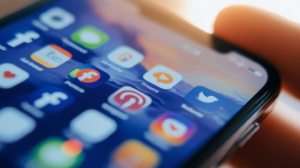 Looking ahead, Facebook Groups are likely to become even more integrated into digital marketing strategies. Brands that leverage these platforms effectively will not only see enhanced customer engagement but also more profound insights into their market, contributing to more personalized and successful marketing efforts.
Looking ahead, Facebook Groups are likely to become even more integrated into digital marketing strategies. Brands that leverage these platforms effectively will not only see enhanced customer engagement but also more profound insights into their market, contributing to more personalized and successful marketing efforts.